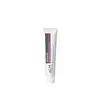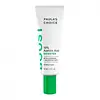What's inside
What's inside
 Key Ingredients
Key Ingredients

 Benefits
Benefits

 Concerns
Concerns

 Ingredients Side-by-side
Ingredients Side-by-side

Water
Skin ConditioningAzelaic Acid
BufferingOctyldodecyl Myristate
EmollientIsononyl Isononanoate
EmollientIsostearyl Isostearate
EmollientCetyl Alcohol
EmollientGlyceryl Stearate
EmollientEthoxydiglycol
HumectantGlycerin
HumectantCoco-Caprylate/Caprate
EmollientNiacinamide
SmoothingXylitol
HumectantPEG-75 Stearate
Pentylene Glycol
Skin ConditioningCetearyl Alcohol
EmollientCeteth-20
CleansingSteareth-20
CleansingGlyceryl Caprylate/Caprate
EmollientWater, Azelaic Acid, Octyldodecyl Myristate, Isononyl Isononanoate, Isostearyl Isostearate, Cetyl Alcohol, Glyceryl Stearate, Ethoxydiglycol, Glycerin, Coco-Caprylate/Caprate, Niacinamide, Xylitol, PEG-75 Stearate, Pentylene Glycol, Cetearyl Alcohol, Ceteth-20, Steareth-20, Glyceryl Caprylate/Caprate
Water
Skin ConditioningAzelaic Acid
BufferingC12-15 Alkyl Benzoate
AntimicrobialCaprylic/Capric Triglyceride
MaskingMethyl Glucose Sesquistearate
EmollientGlycerin
HumectantCetearyl Alcohol
EmollientGlyceryl Stearate
EmollientDimethicone
EmollientSalicylic Acid
MaskingAdenosine
Skin ConditioningGlycyrrhiza Glabra Root Extract
BleachingBoerhavia Diffusa Root Extract
Skin ProtectingAllantoin
Skin ConditioningBisabolol
MaskingCyclopentasiloxane
EmollientXanthan Gum
EmulsifyingSclerotium Gum
Emulsion StabilisingPropanediol
SolventButylene Glycol
HumectantPhenoxyethanol
PreservativeWater, Azelaic Acid, C12-15 Alkyl Benzoate, Caprylic/Capric Triglyceride, Methyl Glucose Sesquistearate, Glycerin, Cetearyl Alcohol, Glyceryl Stearate, Dimethicone, Salicylic Acid, Adenosine, Glycyrrhiza Glabra Root Extract, Boerhavia Diffusa Root Extract, Allantoin, Bisabolol, Cyclopentasiloxane, Xanthan Gum, Sclerotium Gum, Propanediol, Butylene Glycol, Phenoxyethanol
 Reviews
Reviews

Ingredients Explained
These ingredients are found in both products.
Ingredients higher up in an ingredient list are typically present in a larger amount.
Azelaic acid is a multitasker ingredient that helps treat acne, pigmentation, and irritation. It is a great option for sensitive skin.
What makes azelaic special?
The best thing about azelaic acid is it's gentleness. It's generally well-tolerated and safe to use alongside other actives like niacinamide or salicylic acid.
Unlike AHAs, azelaic acid will not make you photosensitive/sun sensitive.
You can find this ingredient naturally occurring in grains like wheat, rye, and barley. In cosmetics, azelaic acid is typically lab-made, which is more stable and effective.
Learn more about Azelaic AcidCetearyl alcohol is a mixture of two fatty alcohols: cetyl alcohol and stearyl alcohol. It is mainly used as an emulsifier. Emulsifiers help prevent the separation of oils and products. Due to its composition, it can also be used to thicken a product or help create foam.
Cetearyl alcohol is an emollient. Emollients help soothe and hydrate the skin by trapping moisture.
Studies show Cetearyl alcohol is non-toxic and non-irritating. The FDA allows products labeled "alcohol-free" to have fatty alcohols.
This ingredient is usually derived from plant oils such as palm, vegetable, or coconut oils. There is debate on whether this ingredient will cause acne.
Due to the fatty acid base, this ingredient may not be Malassezia folliculitis safe.
Learn more about Cetearyl AlcoholGlycerin is already naturally found in your skin. It helps moisturize and protect your skin.
A study from 2016 found glycerin to be more effective as a humectant than AHAs and hyaluronic acid.
As a humectant, it helps the skin stay hydrated by pulling moisture to your skin. The low molecular weight of glycerin allows it to pull moisture into the deeper layers of your skin.
Hydrated skin improves your skin barrier; Your skin barrier helps protect against irritants and bacteria.
Glycerin has also been found to have antimicrobial and antiviral properties. Due to these properties, glycerin is often used in wound and burn treatments.
In cosmetics, glycerin is usually derived from plants such as soybean or palm. However, it can also be sourced from animals, such as tallow or animal fat.
This ingredient is organic, colorless, odorless, and non-toxic.
Glycerin is the name for this ingredient in American English. British English uses Glycerol/Glycerine.
Learn more about GlycerinGlyceryl Stearate is a mix of glycerin and stearic acid.
It is used to stabilize the mixing of water and oil ingredients. By preventing these ingredients from separating, it can help elongate shelf life. It can also help thicken the product's texture.
As an emollient, it helps soften skin and supports barrier-replenishing ingredients.
In cosmetics, Glyceryl Stearate is often made from vegetable oils or synthetically produced.
This ingredient may not be fungal-acne safe
Fun fact: The human body also creates Glyceryl Stearate naturally.
Learn more about Glyceryl StearateWater. It's the most common cosmetic ingredient of all. You'll usually see it at the top of ingredient lists, meaning that it makes up the largest part of the product.
So why is it so popular? Water most often acts as a solvent - this means that it helps dissolve other ingredients into the formulation.
You'll also recognize water as that liquid we all need to stay alive. If you see this, drink a glass of water. Stay hydrated!
Learn more about Water